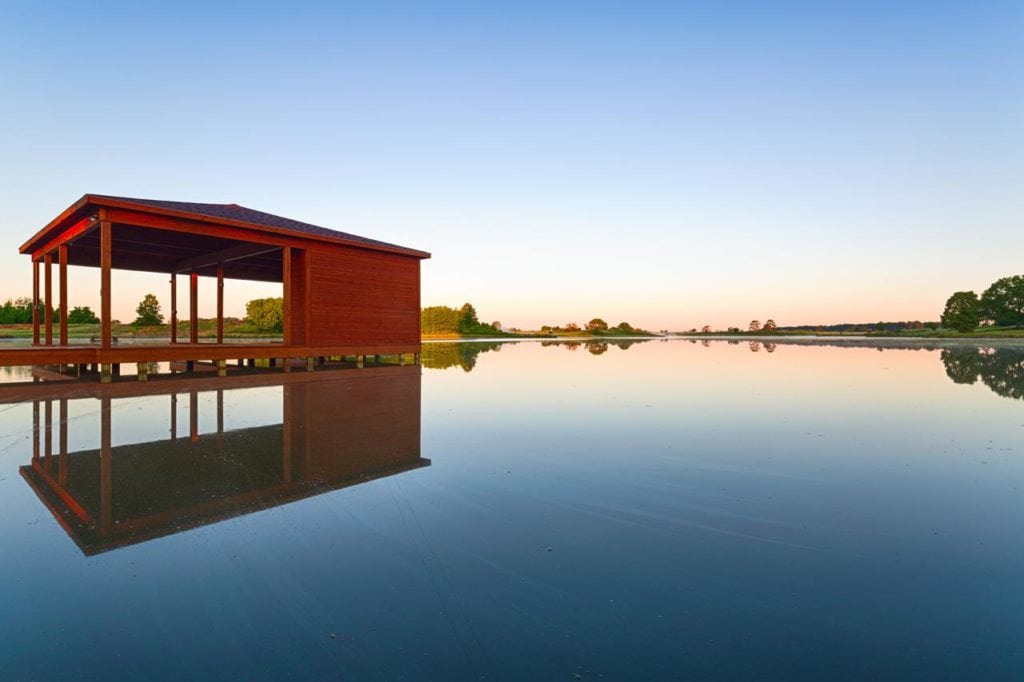Growing up, I watched my parents create a pond on our farm, Bent Willow, by building a dam. Next, they stocked it with brim. I might have grown up then with a skewed sense of my fishing abilities.
Our suburban Atlanta neighborhood lake was built the same way, as was the much larger lake where we spent my childhood summers at our cabin. In its case, Georgia Power Company flooded an entire valley to create the energy source and its byproduct of a recreational playground.
Adding a water feature can provide irrigation, fishing, or watering of livestock to your land’s value. Indeed, part of any idyllic land ownership fantasy is a water feature, but when looking to add a lake, pond or significant water feature to land, the landowner has a lot of real world questions to answer. Condition surveys, dredging, water quality and silt testing, fish stocking and netting, weed cutting and removal, algal treatment and aeration are all to be taken into consideration when adding a water feature to your property, but need not be overwhelming.
If you struggle to employ the larger environmental picture surrounding your water feature placement, it might be wise to employ a consulting service because a landowner should never really set out to add a water feature alone, but recognize you are building a new ecosystem.
Consult surrounding landowners. Lands of America offers more in-depth advice from experts, such as Brad Vollmar. If that goal is irrigation, build on a slope. If you will stock fish like we did or want a clean pond, consider the proximity of nearby trees and natural food sources. A pond is too small for large wildlife, but both lakes and pond ecosystems must feed their inhabitants.
By looking at your natural water source, investigating possible use of land-drains, grey water and reed beds or the installation of a borehole, you can gain a handle on the necessary planning and any other regulatory requirements and turn the idyllic water feature of your imagination into a reality.
And, of course, don’t forget to plant a hallmark willow tree on your pond, lake, or riverbank!

